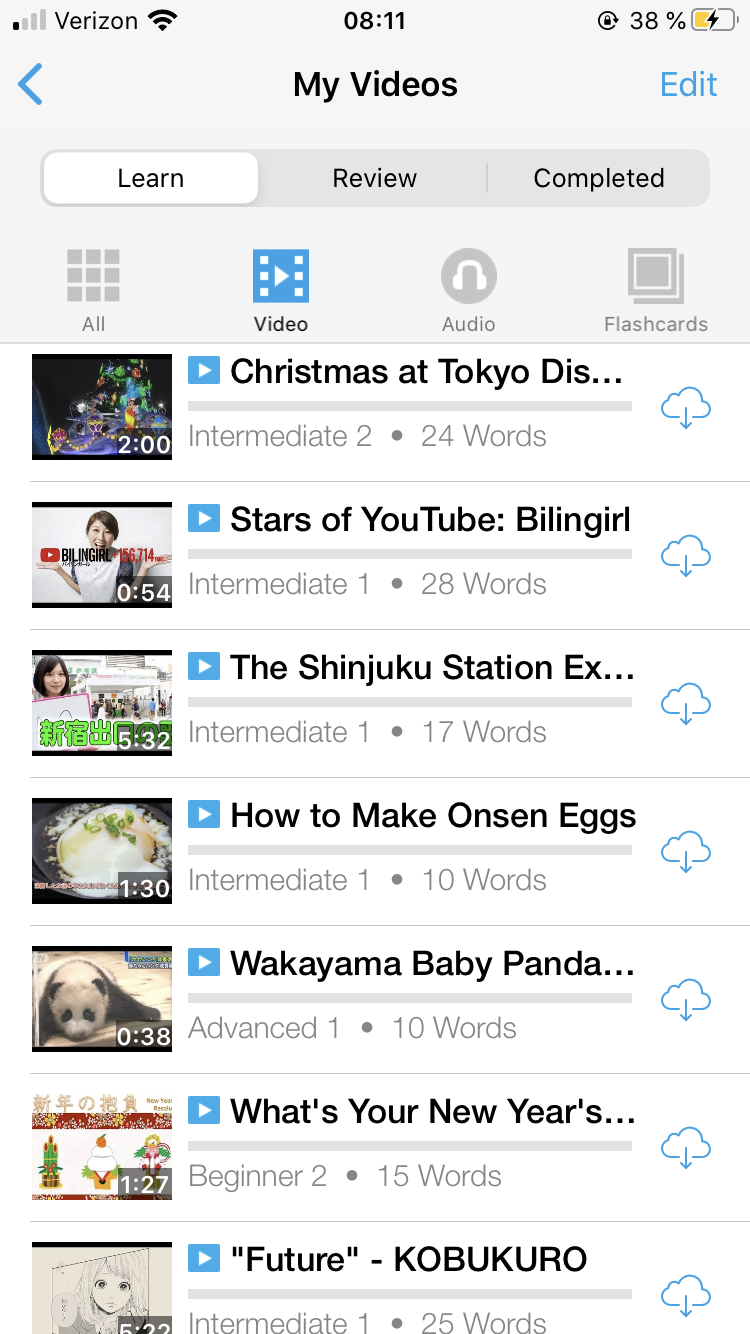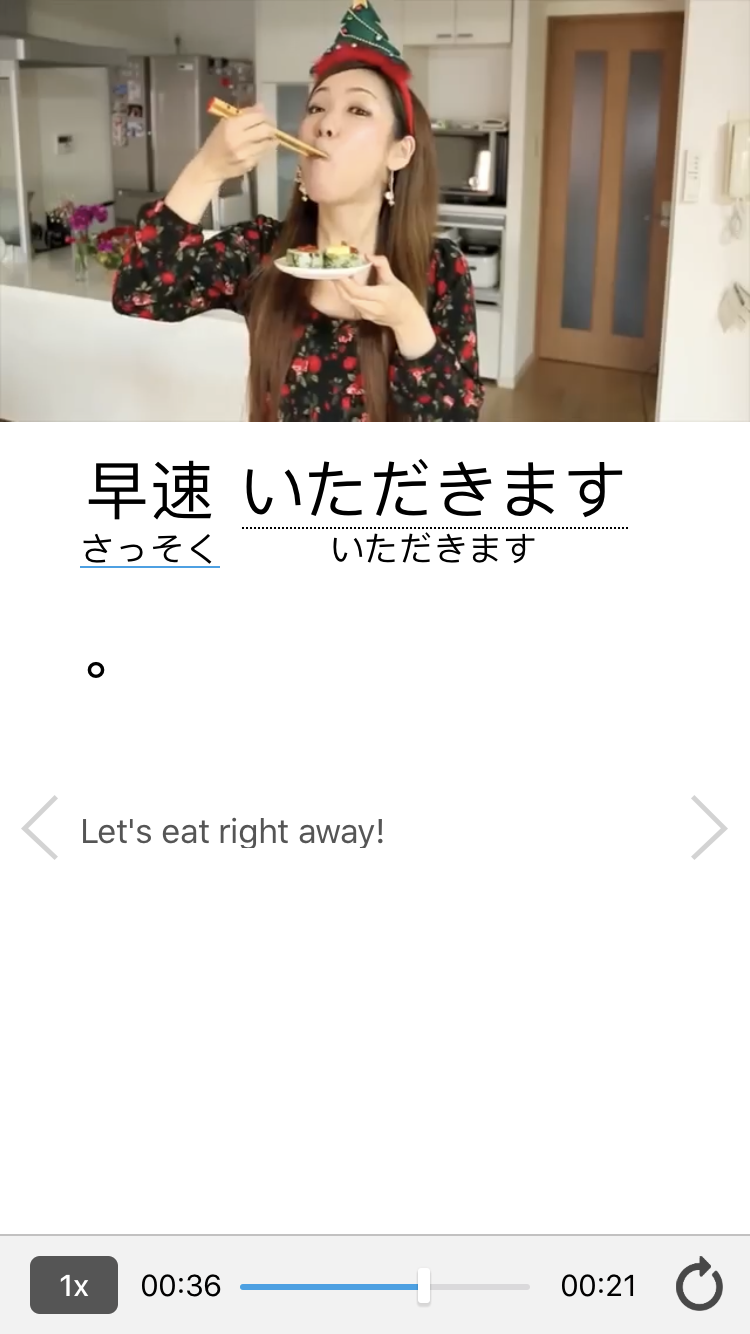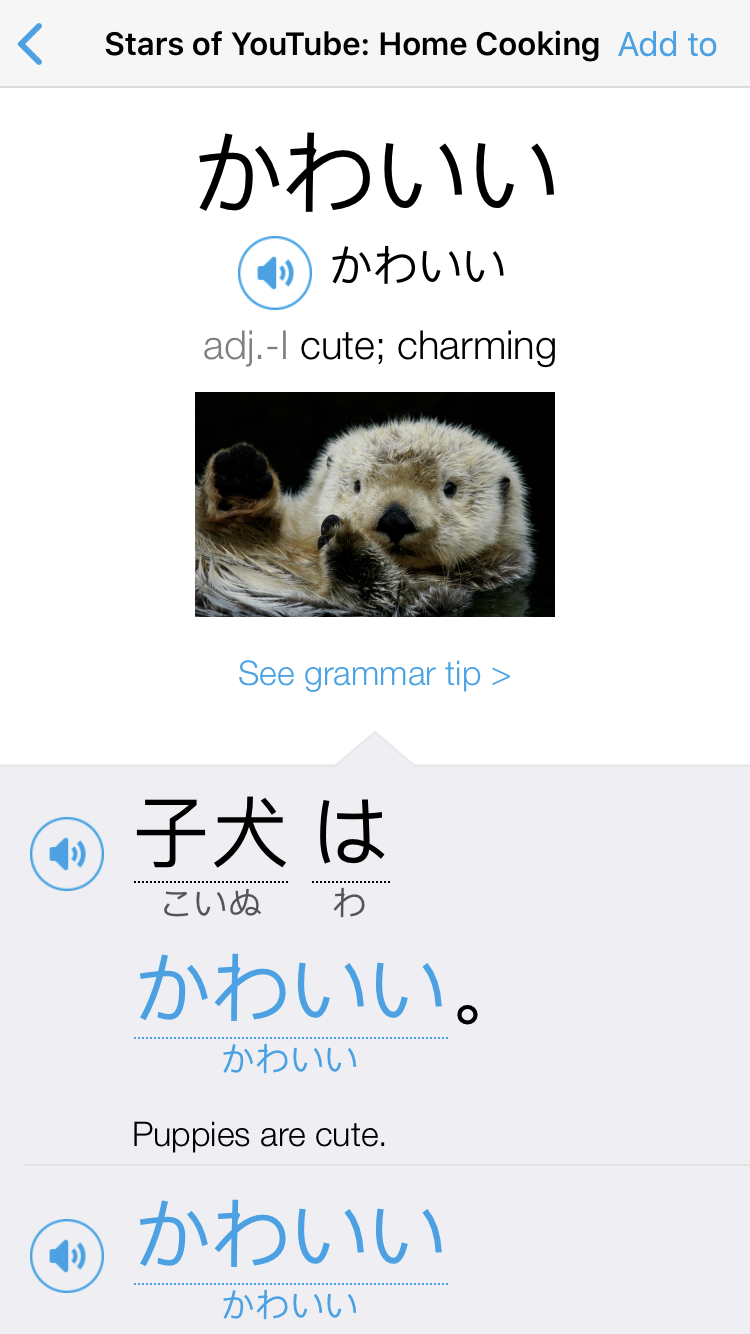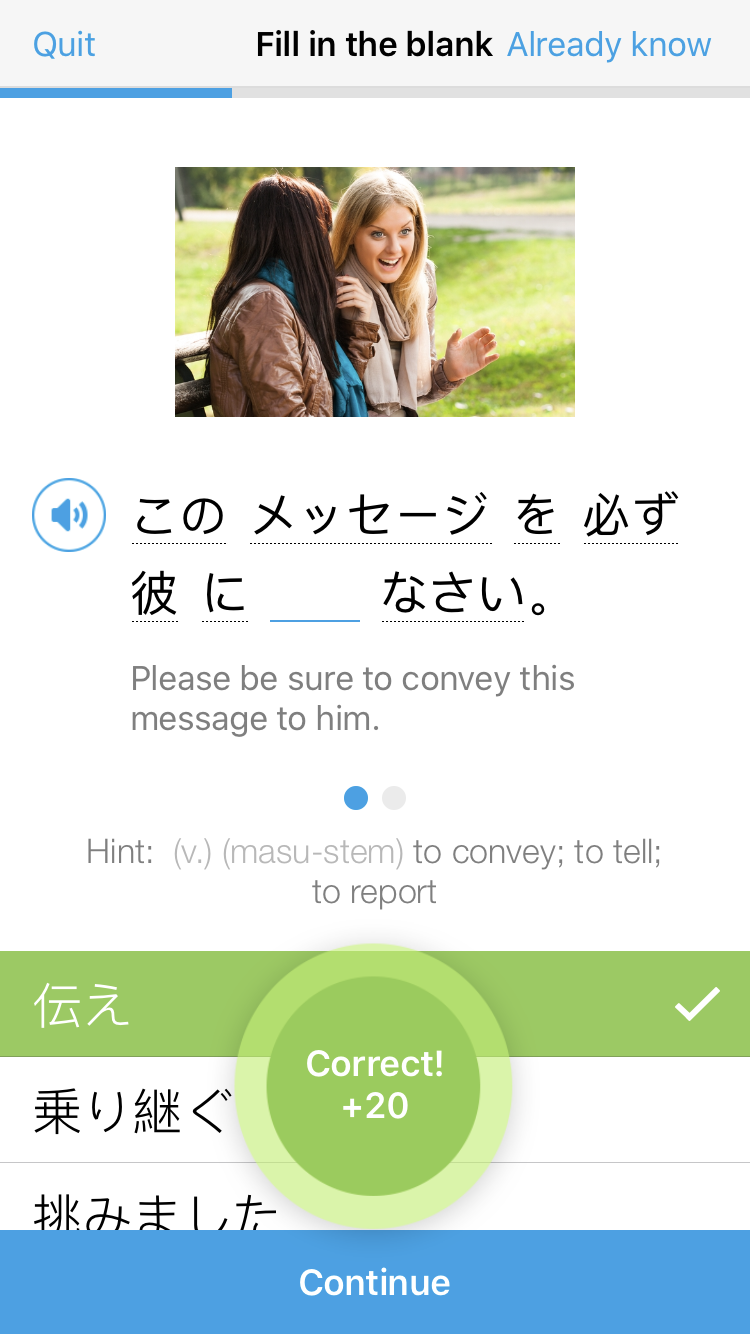完全に非公式の日本語を使用する7つのクールな方法
こんにちは、あなたはカジュアルに行動します!
何、あなたはどのように知らないのですか?
あなたが教室であなたの日本語学習の冒険を始めた場合、チャンスはあなたが最初に話すの半礼儀正しい、中立的な方法を学んだことはかなり
これには多くの理由があり、誤って誰にも怒らせることなく日本語で操作したい場合は、丁寧に話すことができることは間違いありません。,
しかし、あなたがより高いレベルにあなたの日本語を取る準備ができたら、ネイティブのように聞こえ、いくつかのネイティブの友人を作る、あなたは
日本語を練習するより没入型(そしてより楽しい)方法の多くは、非公式のレジスタにハンドルを取得する必要があります:日本の歌を聴いて、アニメを見て、ドラマに夢中になって、人やオンラインで日本の友人とチャット。,
あなたが日本に住んで日本人の友達を作るつもりなら、あなたは少し厄介でスタンドオフィッシュとして出くわすのを避けるために(あなたがお互いを知るようになったら)非公式に人々に話すことができなければならないでしょう。
ダウンロード:このブログ記事は、あなたがどこでも取ることができる便利でポータブルPDFとして利用可能です。 コピーを取得するにはここをクリック. (ダウンロード)
では、いつ非公式の日本語を使うべきですか?
日本語でカジュアルなスピーチを使用するのが適切であるときと適切でないときに注意することが重要です。, これを行う簡単な方法は、一つの簡単なルールから始めることです:彼らはあなたよりも古い場合は、それを中立に保ちます。 だけど、できるのではないでしょうかを選択方法を丁寧にしたいです。
私はいつも私が誰かに会うとき、彼らが誰であっても、いつも中立的に話します。 私はそれが平等を確立し、人々をより快適にすると思います。 しかし、私も非常にフレンドリーな人なので、少なくとも自分の年齢以下の人とは、かなり早くカジュアルなスピーチに陥る傾向があります。 恥ずかしがり屋やわからない場合は、ちょうど彼らがあなたに話す方法に耳を傾け、コピー!, そして疑問があるときは、礼儀正しく。
非公式のスピーチは最初は非常に複雑に見えるかもしれませんが、ほとんどの人は練習するのがとても簡単なので驚くほどすぐに学びます。私は映画やドラマ(特に若い人たちに主演および/または販売されているもの)で人々が話す方法を聞いて、現代の歌の歌詞でロックアウトするだけで、浸透によってすぐにそれを学びました。 FluentUは資源のための学習のカジュアル音声による浸透し、実践で積極的に進めています。
また、日本語のブログを読むことができ、もちろん一緒に練習するためにいくつかの日本語を話す友人を作ってみてください。, 私はカジュアルなスピーチを学んだとき、私の先生は私たちに日本語で日記を書いてもらいました。
だから、あなたの日本語の音をより正式で自然にするために何を探しているべきですか? 私はあなたが尋ねたようです!
現在時制のカジュアルフォームをマスター
日本語のほとんどの学生は、ほとんどの辞書や翻訳者が動詞や形容詞を書く方法であるため、すでにカジュアル共役にある程度の精通しているでしょう。,
あなたがそれを呼ぶものは何でも(プレーンフォーム、カジュアルフォームまたは辞書フォーム)は、おそらくあなたの先生や教科書に依存しますが、この記事
動詞のカジュアルな形にまだ慣れていない人は、これにもう少し時間を費やす必要があるかもしれませんが、ここで簡単に説明します。
まず、日本語の動詞をグループ1、グループ2、不規則な三つのグループに分けます。,(かきます – to write)
To conjugate Group 1 verbs into casual form, simply drop the -ます and change the い sound to an う sound:
- 飲みます⇒ 飲む (のむ)
- 書きます ⇒ 書く (かく)
- 働きます ⇒ 働く (はたらく)
To turn these casual form verbs into negatives, change the う sound to an あ sound and add ない:
- 飲む ⇒ 飲まない (のまない)
- 書く ⇒ 書かない (かかない)
- 働く ⇒ 働かない (はたらかない)
Please note that when the word ends with an う sound, for example 会う (あう: to meet), instead of あ the sound changes to わ, to make it easier to pronounce., Thus, 会う ⇒ 会わない (あわない)
Group 2
Group 2 verbs are simpler to conjugate for informal Japanese, but they can be trickier to spot. Most have a -ます stem that ends with an え sound, but not all of them do. Just be sure to check the casual form of all the new verbs you learn!,
Some examples of Group 2 verbs are:
- 食べます (たべます – to eat)
- 入れます (いれます – to put in)
- できます (to be able to do/to be made)
To conjugate these verbs for informal Japanese, you simply drop the -ます and add る:
- 食べる (たべる)
- 入れる (いれる)
- できる
Drop the -ますand add ない for the negative version:
- 食べない (たべない)
- 入れない (いれない)
- できない
Irregular verbs
Irregular verbs are difficult in that they do not follow any pattern—that’s what makes them irregular!,-しかし、あなたがそれらを共役する方法を学ぶと、彼らはすぐに自然に流れるようにそれらをそんなに使用します。,
Thankfully there are only two irregular verbs, and they’re both very common:
- します (to do)
- 来ます (きます – to come)
To conjugate these in the present tense with a casual voice, here’s what to do:
- します ⇒ する
- 来ます ⇒ 来る (pronounced くる)
In the negative, you simply drop the -ます and add ない:
- します ⇒ しない
- 来ます⇒ 来ない (pronounced こない)
Nouns and adjectives
These are comparatively very easy: they conjugate just the same!, Here’s a guide to conjugating adjectives in case you’re unfamiliar with the process.
The only difference in casual Japanese is that the verb that follows them, です, becomes だ. For example:
- Noun: 授業だ (じゅぎょう だ – the class)
- い-adjective: 長い (ながい – long) please note that unless you’re using it for emphasis (example below), だ isn’t ever necessary when following い-adjectives
- な-adjectives: 元気 (だ) (げんきだ – healthy)
だ is a little challenging though, as you need to know when to use it., Unlike です, which seems to end almost every sentence in neutral speech, だ sounds a little rough or masculine by itself. Use だ when speaking in the past tense (which I’ll explain in the next section) or if you’re going to follow it with ね or よ.
- この写真は綺麗だね? (この しゃしんは きれいだね?) Isn’t this photo beautiful?
- 羨ましいよ! (うらやましいよ!) Wow, I’m so jealous!
Master casual form in the past tense
I’m going to presume some prior knowledge for this section too, so that way we can get to the interesting native speaker stuff!,
Group 1
To use Group 1 verbs in casual past-tense, simply conjugate them the same way you would into て-form—but instead of て, use た.
For example:
- 飲んだ (のんだ – drank)
- 持った (もった – brought)
- 行った (いった – went)
For those of you unfamiliar with て-form, here’s a quick explanation of how to conjugate this form.
Group 2
Group 2 verbs are (again) simpler than Group 1 verbs!
Take off the -ます stem (or the る) and add た.,
For example:
- 食べた (たべた – ate)
- 出た (でた – exited)
- 着た (きた – wore)
Irregular verbs
Irregular conjugate into casual past tense the same way as Group 2 verbs. Simply remove the ます-stem and replace it with た.
- します⇒ した (did)
- 来ます⇒ きた (came)
Nouns and adjectives
Talking about nouns or adjectives in past tense is when だ comes into play.
Follow nouns or な-adjectives (the words that you would’ve followed with -でした in polite speech) with だった.,
- Noun: 女だった (おんな だった – was a woman)
- な-adjective: 簡単だった (かんたん だった – was easy)
い-adjectives conjugate the same way that they do in neutral past tense, by dropping the い and replacing it with かった—simply lose the です!
For example:
- 暑かった (あつかった – was hot)
- すごかった (was fantastic)
- 怖かった (こわかった – was scary)
ない is an い-adjective, so use verbs in plain-negative past tense by ending with –なかった.,
For example:
- 飲まなかった (のまなかった – did not drink)
- 食べなかった (たべなかった – did not eat)
- 会わなかった (あわなかった – did not meet)
Use ちゃう/ちゃった and じゃう/じゃった
These are sentence endings that Japanese learners find quite difficult to understand because it has no English equivalent—and to make matters worse, it’s used in several seemingly unrelated ways.
However, it’s very common among young Japanese, so it’s worth learning, even if (like me) you never have the courage to use it., それを知っていれば、おそらく映画、doramaおよびアニメでスピーチによってかなり頻繁に散らばってそれを聞き始める。
現在時制
日本語の文法を他の言語よりも学びやすくするものの一つは、未来時制がないということです。
動詞の現在時制形は完全に適切ですが、いくつかの色を追加し、将来起こっている何かのアイデアを強化したい場合は、使用してしまうまたはちょう/,
ちゃう and じゃう are the casual forms of てしまう (formal form: てしまいます), the verb to mean that something will happen, either “regrettably” or “with determination.”
You can use ちゃう/じゃう the same way you would てしまう: by conjugating the verb you are describing into て-form and adding ちゃう/じゃう.
So to say that you will hang out with someone you don’t really want to see, you would say あの人と遊んじゃう (あのひとと あそんじゃう), or to say that you will finish your homework with a sense of determination you would say 宿題を終わらせちゃう (しゅくだいを おわらせちゃう).,
過去時制
これを過去時制に変えると、完全に異なる意味になります。 動詞の過去時制の共役、てしまった(正式な形式:てしまいました)は、何かが起こったことを示し、結果は素晴らしいよりも少なかったことを示しています。
だから、ちょったまたはじょったで文を終わらせるということは、話し手が起こったことからの結果に不満または失望していることを示します。
あるいは、英語では何かが”終わって終わった”と言うかもしれないように、何かが終わったという感覚を与えることができます。,”この文の終わった可能性を示唆して失望または救済のきれば亡く、その意味から、コンテキスト
ちょう/ちょったとじょう/じょったのどちらかを選ぶ
では、なぜ同じ文の終わりに二つの異なる発音がありますか?
このフレーズの発音は、それが次の子音に依存します—そして今、あなたは私がこれを使用するにはあまりにも怖がってきた理由を理解しています!,
Use じゃう/じゃった if the casual form stem of the verb you are describing ends with:
- ぶ
- む
- ぬ
- ぐ
Here’s an example of how this looks:
- 今晩読んじゃう。 (こんばん よんじゃう。) — “I am going to read tonight,” said with a sense of determination.,
Use ちゃう/ちゃった following:
- Group 2 verbs
- Irregular verbs
- Any other Group 1 verb stem consonant
Here’s an example of how this looks:
- カキ食べちゃった... (かき たべちゃった...- I regret eating those oysters…)
- 明日、本当にしちゃう。 (あした、ほんとうに しちゃう。 – Tomorrow, I really will do it.)
- 急いじゃう。 (いそいじゃう。 – Unfortunately, I have to hurry.)
- ジムに行っちゃった。 (じむに いっちゃった。 – I went to the gym—said with a sense of “got that out of the way.”)
Now, shall we look at some easier Japanese informal language?, It’s all usable stuff, I promise! がんばって!
Use 〜って
〜って is a very useful sound in casual speech. You can use it in place of the particle と before verbs such as 言う (いう – to say) and 思う (おもう – to think).
- メリーちゃんが寒かったって言った。 (めりーちゃんが さむかった っていった。 – Mary said it was cold.)
- 大学に行きたいって思う 。(だいがくに いきたい っておもう。 – I think I want to go to university.)
You can also use 〜って to end sentences in the place of the verbs そうです and と言っています to indicate that you heard something, or that somebody said something.,
- メリーちゃんが寒かったって。 (めりーちゃんが さむかった って。 – Mary said it was cold.)
- テストは難しいって。 (てすとは むずかしい って。 – I heard that the test will be hard.)
Use なあ〜
なあ〜 is a funny little sentence-ender that you’ll probably start to notice everywhere. It seems to be used in just about any context, but most commonly as a slightly more pushy version of ね~ as in, “can you believe it?” or “don’t you agree?”
Women and girls should be mindful about using なあ〜 too often, as it can come across as a little rough or crude.,
ドロップ粒子
あなたが私のようで、を対を使うときのこつを決して持っていないなら、あなたは非公式の日本語のこの側面を好きになるでしょう。 いくつかの粒子を完全に落とすのはかなり一般的です! 何気なく話すときは、”は”、”がすべて文章から落とすことができ、あなたはまだ完璧な意味をなさないでしょう。
カジュアルな日本語で落とされるもう一つの助詞は、質問の助詞です。
英語と同じように、カジュアルな日本語で質問していることを示します:疑問符、またはあなたのイントネーションで。,
Drop い
When talking about doing something in the present tense in neutral Japanese you’d use しています. The dictionary conjugation of this would logically be している but in conversation it’s common to drop the い to shorten it to してる.
- 海に来てる。 (うみに きてる。 – We are at the beach.)
- 二人付き合ってる。 (ふたりつきあってる。 – Those two are going out.)
You can do this with all verbs to make them run off the tongue a little easier.,
ジェンダー固有の一般的なフレーズを試してみてください
ニュートラル日本語は基本的にジェンダーニュートラルですが、カジュアルなスピーチでは、男性と女性が話す方法を色付けし、特徴付ける自由がもう少しあります。 日本語は他の多くの言語と同じ程度にジェンダー固有ではありません。 傾向は非常に急速に変化しますが、男性や女性の口から聞こえる可能性が高いフレーズの特異性やターンをいくつか覚えておくと便利です。,
女言葉 (おんな ことば – “women’s words”)
While it isn’t necessary for anyone to use sentence-enders in casual Japanese, girls and women will sometimes end a sentence with わ or の—for example, そのドレス高いわ! (そのどれす たかいわ! – That dress is expensive!) or どこで会うの? (どこで あうの? – Where shall we meet?)—as well as the gender neutral ね and よ. There are many combinations of syllables that girls and women may use to end sentences including:
- だね
- だよ
- なの
- のね
- わね
- わよ
- のよ
- だこと
…you get the picture., There isn’t really any right or wrong way to use sentence-enders, just whatever rolls naturally! Your meaning should be clear from your intonation. Questions commonly end with either no sentence-ender, or with の or なの.
Women and girls sometimes refer to themselves as あたし rather than 私 (わたし), as it sounds a little more girlish and innocent. Women referring to themselves as 僕 (ぼく) is becoming more common, but still sounds quite tomboyish.
Women can refer to men as あんた in a casual setting, or very informally call “that person” あの人 (あのひと) or あの子 (あのこ)., 女性はますます頻繁に男性を参照するために”(きみ–あなた)”を使用し始めています。 男性は非常に近い女性(および一部の男性)のためにそれを使用することができますが、女性は男性よりも、他の人の名前を接尾辞-ちょうすることもはるかに一般的です。
おとこことば–”men’s words”
男性的な言語は、明治時代に女の子と女性によって始まったジェンダー特異性のほとんどとして、本当にジェンダーニュートラルな非公式の日本語です。
何気なく話す日本人男性は、これらの組み合わせまたは全くなしで文章を終わらせることがあります。, ぞ, ぜ and だぜ are a little old-fashioned now, but I’ve heard them used by men to sound a bit more rough and manly. Men might end a question simply by intonation, or they can use:
- か?
- かい?
- なのかい?
- だい?
- なんだい?
- んだい?
Among friends or loved ones men might refer to themselves as 俺 (おれ) rather than the more boyish 僕 (ぼく), or to others as お前 (おまえ).
If this all seems like a lot to learn, there really is no need to worry., インフォーマルな日本語の多くの特異性は、単に共通しているものとそれが何を意味するのかを認識するよりも、勉強と暗記の問題ではありません。
あなたは単にあなたが中立的な声で同じ日本語を話すが、辞書の形にあなたの文の終わりを短くする場合、それは素晴らしいスタートです! あなたはすでにあなたが知っている人々に暖かく、友好的に聞こえます。,
あなたがこれらのフレーズのターンを知っているので、あなたはおそらくすべての場所でそれらに気づき始めるでしょう、そしてあなたの自信を築くように、あなたはこれらの小さな癖であなたのスピ
ダウンロード:このブログ記事は、あなたがどこでも取ることができる便利でポータブルPDFとして利用可能です。 コピーを取得するにはここをクリック. (ダウンロード)
そしてもう一つ。..
あなたが本物の教材で日本語を学ぶのが大好きなら、私はFluentUについてもっと教えてください。,
FluentUは自然かつ徐々に日本語や文化を学ぶことにあなたを容易にします。 それは実際の生活の中で話されているようにあなたは本当の日本語を学ぶでしょう。
FluentUには、以下のような幅広い現代的なビデオがあります。

FluentUは、インタラクティブな転写物を通じて、これらのネイティブな日本のビデオを親しみやすくします。 即座にそれを調べるために任意の単語をタップします。

すべての定義には複数の例があり、あなたのような日本語学習者のために書かれています。 語彙リストに確認したい単語を追加するには、をタップします。,

FluentUには学習モードがあり、すべてのビデオを言語学習レッスンに変えます。 でもスワイプ左または右に見えます。

最良の部分は? FluentUはあなたの語彙を追跡し、それはあなたの語彙に基づいてコンテンツや例を示唆しています。 あなたは100%パーソナライズされた経験があります。
FluentUアプリは、iOSとAndroidのために利用可能になりました、そしてそれはあなたがあなたのコンピュータやタブレット上でアクセスすることができ、ウェブ,
あなたはこの記事が好きなら、何かがあなたがFluentU、現実世界のビデオで日本語を学ぶための最良の方法を愛していることを教えてくれます。
オンラインで日本語浸漬を体験してください!